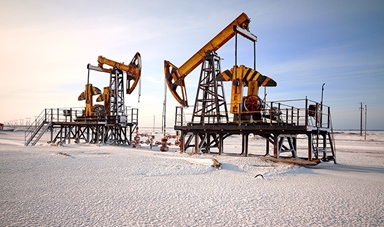Loading component...
At a glance
When coal and iron ore prices were booming, the Australian dollar reached as high as US$1.10 in July 2011. In the years after that, as commodities prices fell, the A$ exchange rate drifted down.
In 2016, its decline seems to have halted. Apart from a brief dip below US70 cents in January, it has traded largely in the US70 to US75 cent range, and broke out above US76 cents in April and again in July. That was a surprise to many analysts, who expected its slide to continue.
So what does drive the Australian dollar's value?
Commodity prices and the terms of trade
For the first decade or so after the Australian dollar was floated in 1983, its value closely tracked commodity prices and what are called the “terms of trade” – the ratio of the cost of a nation’s imports to the price of its exports. Commodity prices largely determine Australia’s terms of trade, because its exports are dominated by the prices of commodities – items such as coal, iron ore, liquefied natural gas, coal, aluminium ores, beef and wheat.
In these early years after the float, estimating the fair value of the dollar was as simple as working out how the cost of imports stacked up against the price the rest of the world was prepared to pay for Australia’s exports. However, that tight relationship started to break down in the late 1990s and has remained a good deal looser ever since.
Commodity prices and the terms of trade still matter – the Reserve Bank of Australia (RBA) considers that they continue to play the dominant role in determining the exchange rate – but other factors enter the calculation as well.
Fear and the Brexit factor
At times of financial instability and economic uncertainty, investors have usually favoured gold and the US currency as safe havens for their assets. The Australian dollar has been added to that list – at least for now.
In the wake of the UK’s shock Brexit vote, investors have piled into 10-year Australian Government bonds, driving their yields down to a record low of 1.84 per cent on 6 July.
Because investors have to buy Australian dollars to complete the transaction, the effect has been to help hold up the currency.
Interest rate differentials
In the wake of the global financial crisis (GFC), official interest rates in most developed economies are extraordinarily low. In the case of Japan and the euro zone, they are even negative – meaning that investors have to pay for the privilege of depositing their money with the Japanese Government.
It is little wonder, then, that Australia is seeing a strong inflow of capital. The RBA’s official cash rate of 1.75 per cent might be a record low for the country, but it stands out by comparison with the close-to-zero rates that prevail in most other major developed economies, making Australian bonds alluring.
Good neighbours
During the GFC, Australia’s close trade links with China and other emerging economies in East Asia helped shield it from the worst of the global downturn. While the US and Europe stumbled into recession, Australia continued to punch out solid growth and it remains tied in with the fortunes of the most vibrant part of the international economy.
It makes Australia an attractive destination for investors seeking to have relatively low-risk exposure to East Asian growth.
Credit rating
One of the factors helping to hold up the Australian dollar has been the country’s AAA credit rating. The rating by all three major agencies helps to keep down the lowest interest rates on Australian Government debt – but this may not last.
Standard and Poor’s (S&P) has put Australia’s AAA rating on negative watch. In its rationale for the decision, S&P stated, “The negative outlook on Australia reflects our view that without the implementation of more forceful fiscal policy decisions, material government budget deficits may persist for several years with little improvement. Ongoing budget deficits may become incompatible with Australia's high level of external indebtedness and therefore inconsistent with a 'AAA' rating.”
In the March quarter, total net foreign debt for the entire economy reached A$1.02 trillion, and S&P estimates the nation’s total external financing requirement will reach A$840 billion this year. If Australia loses its AAA rating, the cost of funding for governments could increase, further pushing up government deficits as well as increasing borrowing costs for households and business.
Hedging the risk
The Australian dollar is one of the most heavily traded currencies in the world, and its fluctuations can be a major headache for firms involved in export or import. An upswing in the dollar might make imported components or offshore services cheaper, but it can undermine price competitiveness. Similarly, a plunge in value can make foreign loans more expensive to service and see the cost of imported skills and equipment rise.
Adverse movements in the exchange rate can affect not only profit but also cash flow, balance sheet values, sales revenue and foreign currency income from investments.
CPA Australia has developed guidance to help businesses assess and manage their foreign exchange risk.
The gyrations of Australia’s floating dollar can make life complicated for businesses with exposure to offshore markets, and some may hanker for the certainty of a fixed exchange rate.
RBA governor Glenn Stevens admits that life with a floating currency can be difficult but says that overall it has served the country well.
“Over the past 30 years, the exchange rate has on occasion been the subject of excitement, concern, even shock,” he says.
“It has acted as a shock-absorber, as intended, but it has also served as a disciplining constraint at times. Generally speaking, that was good for us.
“On balance, the evidence suggests, I think, that the market has mostly moved the exchange rate to about the right place, sooner or later.”

